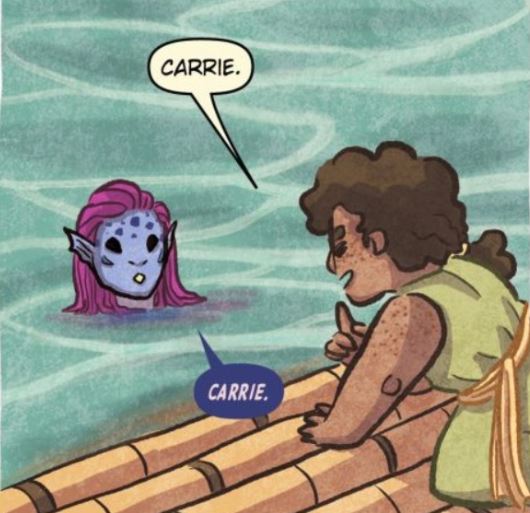Uncategorized
http://blacknerdproblems.com/sail-an-all-ages-appropriate-story-on-the-choices-we-make/
Words: Mark O. Stack / Art: Jean Pe / Lettering: Danny Djeljosev /King Baby Comics
I was pulled in by this cover (I see you Jean Pe) of this lone figure on the ocean and decided to buy it after reading a few pages. Sail is a short comic of a young person leaving home, embarking on an adventure only to gain insight of what she’s had all along.
The art style is undeniable cute. Whimsical. The lettering job is simple, not over done. I was really digging the mermaid/aquatic creature that shows up: they aren’t hyper-sexualized and the color combo won me over.
A pet-peeve of mine is when comics are stuffed to the brim with text and word/thought bubbles. It means so much more to me when a story can progress without a whole lot of text. The sequence featuring the panels where day turns to night and our little adventurer has a discovery would be an prime example of this being done right.
With less than fifteen pages, Sail isn’t very long which is fine–it does manage to set up and deliver a story but I feel the ending was a bit rushed. Nevertheless as a all-ages appropriate story it strikes home why sometimes we need to examine ourselves through the decisions we make and how unlikely allies can be found to help us discover what we always knew.
7.5 Headstrong Adventures out of 10
Pick up Sail for only 99 cents here.
The print edition of SAIL is finally available for purchase! We only have a limited quantity for now, so: https://t.co/Ac1zdm0HUp
— Mark! A Vagrant (@MarkOStack) April 3, 2017
Are you following Black Nerd Problems on Twitter, Facebook, Tumblr or Google+?




